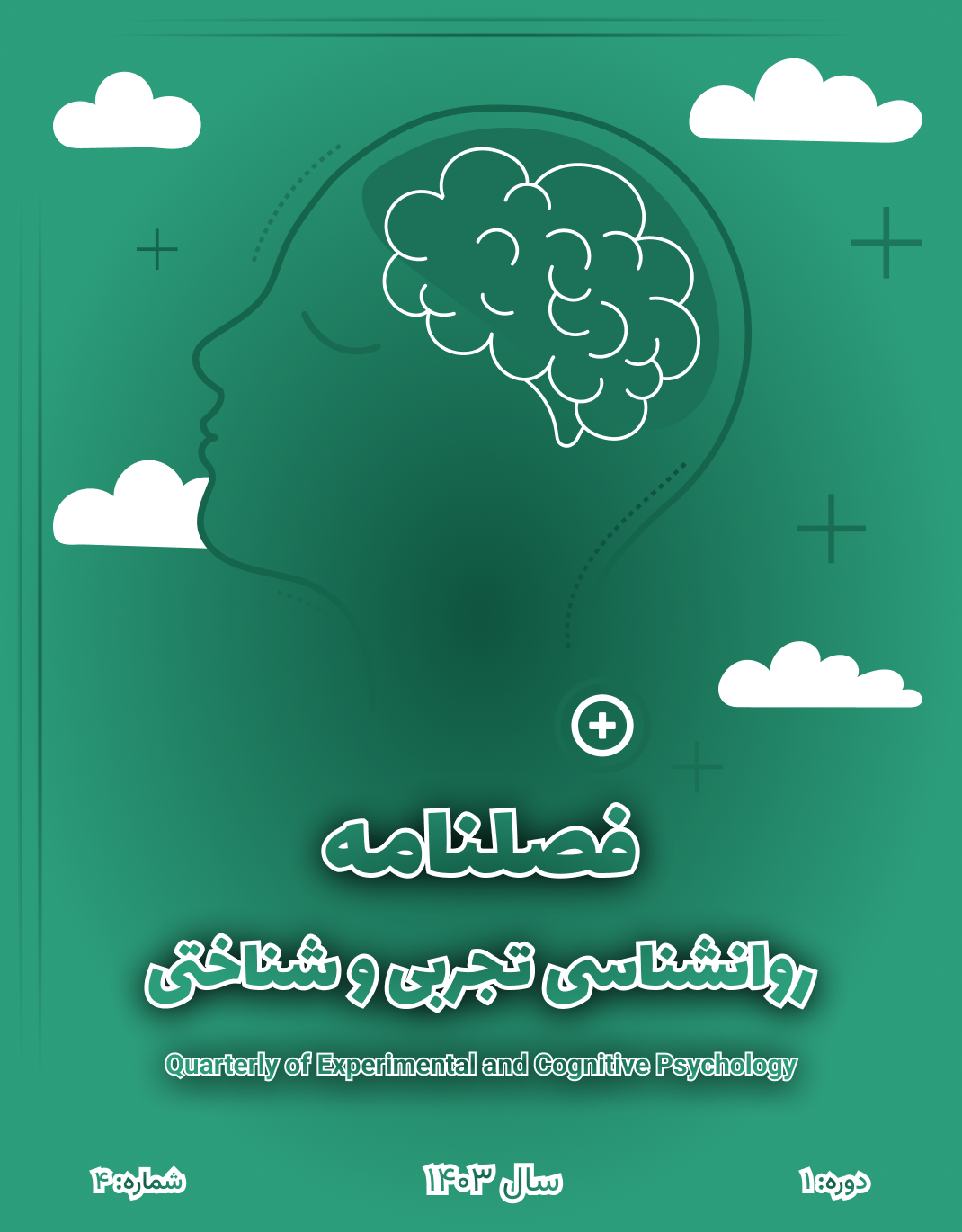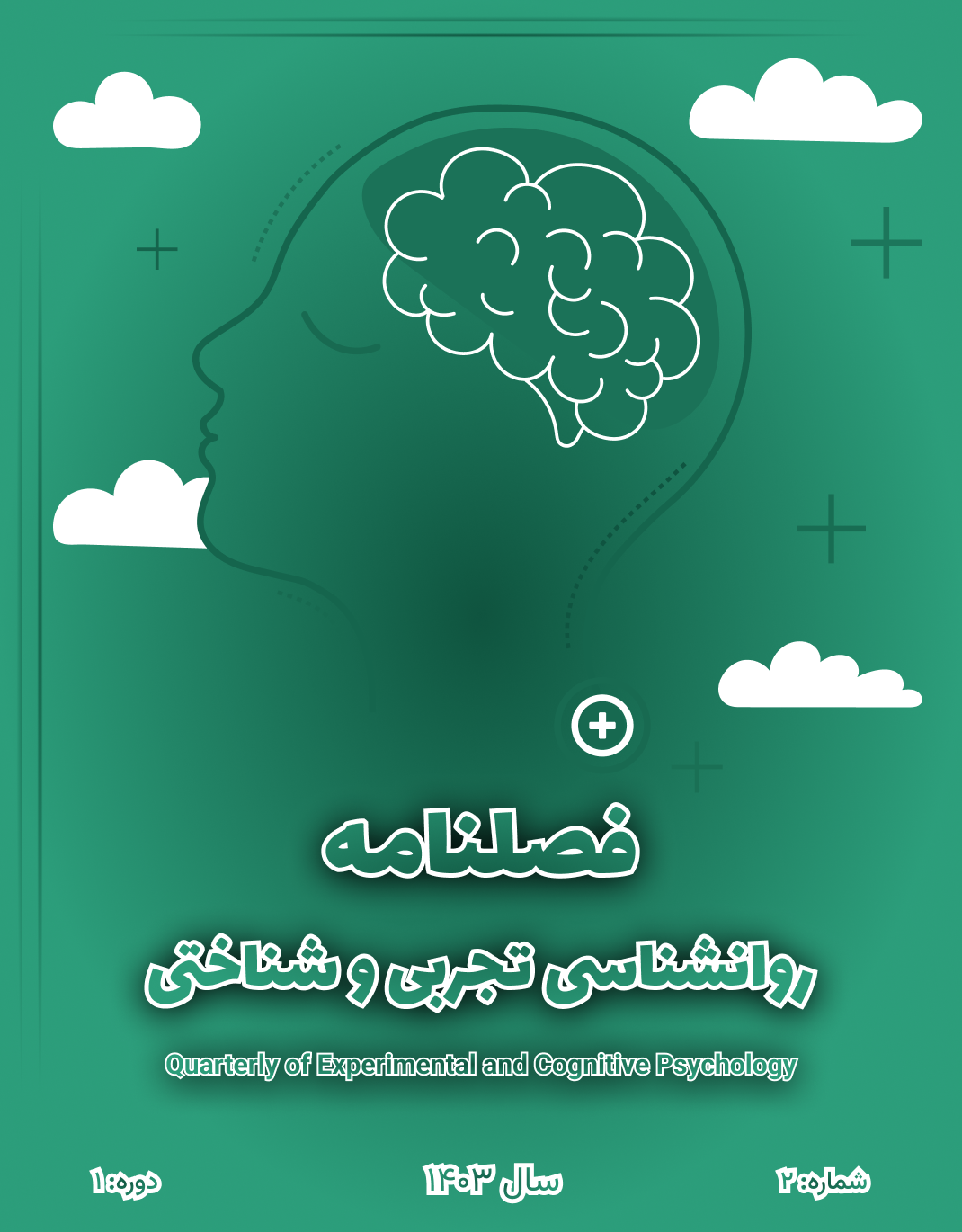مدل ساختاری تجربه قلدری- قربانی سایبری بر اساس حمایت اجتماعی ادراک شده، با میانجیگری عزت نفس در نوجوانان
کلمات کلیدی:
قلدری سایبری, حمایت اجتماعی ادراکشده, عزت نفس, قربانی سایبری, نوجوانانچکیده
هدف: هدف از این پژوهش، بررسی مدل ساختاری تجربه قلدری-قربانی سایبری بر اساس حمایت اجتماعی ادراکشده با نقش میانجی عزت نفس در میان نوجوانان بود.
مواد و روش: روش تحقیق این مطالعه توصیفی-همبستگی از نوع معادلات ساختاری بود. جامعه آماری شامل کلیه دانشآموزان متوسطه دوره دوم شهر تهران در سال تحصیلی ۱۴۰۳-۱۴۰۲ بود. با استفاده از روش نمونهگیری خوشهای چندمرحلهای، ۴۰۰ دانشآموز به عنوان نمونه انتخاب شدند. ابزارهای گردآوری دادهها شامل مقیاس تجربه قلدری-قربانی سایبری، مقیاس چندبعدی حمایت اجتماعی ادراکشده، و مقیاس عزت نفس روزنبرگ بود. دادهها با استفاده از نرمافزارهای SPSS-26 و Amos-24 و بر اساس مدلسازی معادلات ساختاری تحلیل شدند.
یافتهها: نتایج تحلیل مسیر نشان داد که حمایت اجتماعی ادراکشده تأثیر مثبت و معناداری بر عزت نفس دارد (β=0.438, p<0.001). همچنین، عزت نفس به شکل معناداری و منفی بر تجربه قلدری-قربانی سایبری تأثیر گذاشت (β=-0.317, p<0.001). حمایت اجتماعی ادراکشده نیز اثر منفی مستقیمی بر تجربه قلدری-قربانی سایبری داشت (β=-0.567, p<0.001). آزمون سوبل نقش میانجیگری عزت نفس را در رابطه بین حمایت اجتماعی و تجربه قلدری-قربانی سایبری تأیید کرد (Z=-7.933, p<0.001).
نتیجهگیری: یافتههای پژوهش حاضر نشان میدهد که حمایت اجتماعی ادراکشده میتواند با افزایش عزت نفس نوجوانان، نقش حفاظتی در برابر تجارب منفی فضای مجازی ایفا کند. تقویت منابع حمایتی خانوادگی، دوستانه و اجتماعی و ارتقاء عزت نفس در نوجوانان میتواند به کاهش معنادار قلدری و قربانی شدن در فضای مجازی منجر شود.
دانلودها
مراجع
Agustiningsih, N., Yusuf, A., & Ahsan, A. (2024). Relationships Among Self-Esteem, Bullying, and Cyberbullying in Adolescents: A Systematic Review. Journal of Psychosocial Nursing and Mental Health Services, 62(5), 11-17. https://doi.org/10.3928/02793695-20231013-01
Cavallo, N. D., Maggi, G., Ferraiuolo, F., Sorrentino, A., Perrotta, S., Carotenuto, M., Santangelo, G., & Santoro, C. (2023). Neuropsychiatric Manifestations, Reduced Self-Esteem and Poor Quality of Life in Children and Adolescents With Neurofibromatosis Type 1 (NF1): The Impact of Symptom Visibility and Bullying Behavior. Children, 10(2), 330. https://doi.org/10.3390/children10020330
Han, Y. (2025). Gender Differences in the Psychological Effects of Cyberbullying on Chinese Adolescents' Self-Esteem. Communications in Humanities Research, 56(1), 146-149. https://doi.org/10.54254/2753-7064/2024.21737
Haura, A. T., & Ardi, Z. (2020). Student’s Self Esteem and Cyber-Bullying Behavior in Senior High School. Jurnal Aplikasi Iptek Indonesia, 4(2), 89-94. https://doi.org/10.24036/4.24357
Hidayat, D., Nur, R. A., Saputri, A., Lyndon, N., & Gustini, L. K. (2024). Characteristics, Role of Social Media and Self Esteem of Victims in Cyberbullying Cases in Indonesia. Nyimak Journal of Communication, 8(2), 223. https://doi.org/10.31000/nyimak.v8i2.10979
Iswanti, D. I. (2025). Exploring the Condition of Cyberbullying Victimization on Adolescents' Self-Esteem: A Cross-Sectional Study. Journal Of Nursing Practice, 8(3), 496-506. https://doi.org/10.30994/jnp.v8i3.566
Juan de Dios Benítez, S., Falla, D., Alcaide, F. C., & Zych, I. (2024). Bullying, Cyberbullying, and Empathy as Longitudinal Predictors of Self-Esteem. Psychology Society & Education, 16(3), 63-71. https://doi.org/10.21071/pse.v16i3.16243
Khan, B. A., Shamsdin, Kubra, Asif, M. F., & Jabeen, N. (2025). Cyberbullying and Its Psychological Effects on Secondary School Students in Urban Pakistan. Journal of Social Sciences Review, 5(1), 189-196. https://doi.org/10.62843/jssr.v5i1.483
Maidartati, M., Irawan, E., Tania, M., Saputra, A., & Firdaus, S. B. (2024). The Relationship Between Cyberbullying and Self-Esteem in Adolescents at Global Edu High School. International journal of health sciences, 2(1), 414-428. https://doi.org/10.59585/ijhs.v2i1.325
Mashuri, S. F., & Ambarwati, K. D. (2024). Self Esteem Pada Remaja Korban Cyberbullying Di Sma Islam Sudirman Ambarawa. Jurnal Psikologi Malahayati, 6(2). https://doi.org/10.33024/jpm.v6i2.16079
Mauludi, M. I., & Fasikhah, S. S. (2024). The Mediating Role of Emotional Competence in the Association Between Self-Esteem and Cyberbullying Victimization Among Adolescents. Jurnal Ilmiah Psikologi Terapan, 12(2), 133-139. https://doi.org/10.22219/jipt.v12i2.31039
Mohamed, E., Hassan, E. E., Hassan, Z., Abouzeid, O. N., & Mohammed, M. (2023). Adolescents Cyberbullying and Its Consequences on Self-Esteem and Suicidal Thoughts at Minia Governorate, Egypt. Minia Scientific Nursing Journal, 013(3), 35-46. https://doi.org/10.21608/msnj.2023.233705.1077
Noor, Q., Rashid, A., Abbasi, P., Babar, T., Abbasi, N. M., & Rubab, M. (2025). The Effect of Cyberbullying Victimization on Self-Esteem and Psychological Well-Being in Young Adults. Aijss, 4(1), 147-162. https://doi.org/10.63056/acad.004.01.0049
Octavia, D., Sari, R. M., Merdekawati, D., Marisdayana, R., & Yuliyana, R. (2022). The Correlation Between Parental Communication Pattern, Self-Esteem, and Moral Disengagement With Cyberbullying Behavior in Early Adolescents: A Cross-Sectional Study. Jurnal Ners, 17(1). https://doi.org/10.20473/jn.v17i1.24539
Oktavia, D. A., Salsabiyla, R., Noviyanti, A. D., Budianto, S., & Pasopati, R. U. (2024). Cyberbullying and Its Impacts on Self-Loathing Behavior. Eckll, 11(1), 185-196. https://doi.org/10.25139/eckll.v11i1.7709
Palermiti, A. L., Bartolo, M. G., Musso, P., Servidio, R., & Costabile, A. (2022). Self-Esteem and Adolescent Bullying/Cyberbullying and Victimization/Cybervictimization Behaviours: A Person-Oriented Approach. Europe’s Journal of Psychology, 18(3), 249-261. https://doi.org/10.5964/ejop.5379
Pertiwi, Y., & Karneli, Y. (2024). Digital Module With the SFBC Approach to Increase the Self Esteem of Cyberbullying Victims. Journal of Educational Health and Community Psychology, 13(1), 23. https://doi.org/10.12928/jehcp.v13i1.28359
Pribadi, R. (2023). Pengaruh Cyberbullying Terhadap Harga Diri Pada Dewasa Awal Korban Cyberbullying Di Twitter. JRP, 6(3), 113. https://doi.org/10.24036/jrp.v6i3.15036
Salsabila, S., & Kusdiyati, S. (2023). Pengaruh Self-Esteem Terhadap Cyberbullying Victimization Pada Remaja Di Jawa Barat. Bandung Conference Series Psychology Science, 3(1). https://doi.org/10.29313/bcsps.v3i1.5142
Talwar, P. (2022). Potential Sociodemographic Predictors of Cyberbullying Behavior Among University Students. Malaysian Journal of Psychiatry, 31(1), 32-38. https://doi.org/10.4103/mjp.mjp_7_22
Tetteh, A., Awaah, F., & Addo, D. (2022). Perception of Cyberbullying Among Students: The Study of a Developing Country. Journal of Aggression Conflict and Peace Research, 15(2), 163-180. https://doi.org/10.1108/jacpr-06-2022-0726
Truc, Q. H. T. (2021). Cyberbullying Victimization Among Vietnamese College Students: Social Support, Self-Esteem, Coping Strategies and Depression. Journal of Science Social Science, 66(3), 185-193. https://doi.org/10.18173/2354-1067.2021-0061
Truc, Q. H. T., & The, H. H. (2022). Factors Related to University Students’ Cyberbullying in Central Vietnam. Journal of Science Educational Science, 67(4), 188-198. https://doi.org/10.18173/2354-1075.2022-0057
Wachs, S., Vazsonyi, A. T., Wright, M. F., & Jiskrova, G. K. (2020). Cross-National Associations Among Cyberbullying Victimization, Self-Esteem, and Internet Addiction: Direct and Indirect Effects of Alexithymia. Frontiers in psychology, 11. https://doi.org/10.3389/fpsyg.2020.01368
Xia, T., Liao, J., Deng, Y., & Lin-li, L. I. (2023). Cyberbullying Victimization and Social Anxiety: Mediating Effects With Moderation. Sustainability, 15(13), 9978. https://doi.org/10.3390/su15139978
دانلود
چاپ شده
ارسال
بازنگری
پذیرش
شماره
نوع مقاله
مجوز
حق نشر 2024 عاطفه غرقی, نیلوفر طهمورسی, محمدرضا بلیاد، معصومه ژیان باقری (نویسنده)

این پروژه تحت مجوز بین المللی Creative Commons Attribution-NonCommercial 4.0 می باشد.






